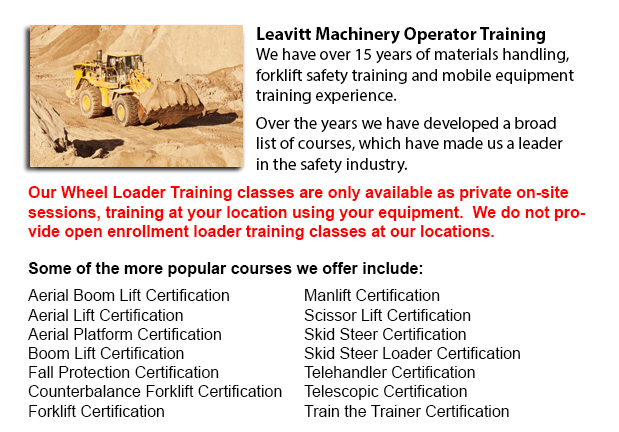
Lift trucks are obtainable in several various units that have varying load capacities. The majority of typical lift trucks utilized in warehouse settings have load capacities of one to five tons. Bigger scale models are used for heavier loads, such as loading shipping containers, could have up to fifty tons lift capacity.
The operator could use a control to be able to lower and raise the blades, that are likewise known as "tines or forks." The operator can also tilt the mast to be able to compensate for a heavy load's tendency to tilt the forks downward to the ground. Tilt provides an ability to function on uneven surface also. There are annual competitions meant for skilled lift truck operators to contend in timed challenges and obstacle courses at local lift truck rodeo events.
General utilization
All forklifts are rated for safety. There is a particular load maximum and a specific forward center of gravity. This essential info is supplied by the manufacturer and placed on the nameplate. It is vital cargo do not go beyond these specifications. It is against the law in a lot of jurisdictions to tamper with or take out the nameplate without getting consent from the lift truck manufacturer.
Most lift trucks have rear-wheel steering in order to improve maneuverability. This is specifically helpful within confined areas and tight cornering spaces. This type of steering differs rather a bit from a driver's initial experience with various motor vehicles. For the reason that there is no caster action while steering, it is no essential to apply steering force to be able to maintain a continuous rate of turn.
One more unique characteristic common with forklift utilization is instability. A constant change in center of gravity occurs between the load and the lift truck and they have to be considered a unit during operation. A lift truck with a raised load has gravitational and centrifugal forces that can converge to bring about a disastrous tipping accident. In order to prevent this from happening, a forklift should never negotiate a turn at speed with its load raised.
Lift trucks are carefully built with a specific load limit intended for the forks with the limit lowering with undercutting of the load. This means that the freight does not butt against the fork "L" and will lower with the elevation of the blade. Usually, a loading plate to consult for loading reference is placed on the forklift. It is unsafe to utilize a lift truck as a personnel hoist without first fitting it with certain safety devices like for instance a "cage" or "cherry picker."
Forklift utilize in distribution centers and warehouses
Forklifts are an important component of warehouses and distribution centers. It is essential that the work surroundings they are placed in is designed to accommodate their efficient and safe movement. With Drive-In/Drive-Thru Racking, a forklift should go within a storage bay that is many pallet positions deep to set down or get a pallet. Operators are often guided into the bay through rails on the floor and the pallet is placed on cantilevered arms or rails. These tight manoeuvres need expert operators so as to carry out the task safely and efficiently. In view of the fact that each pallet needs the truck to go into the storage structure, damage done here is more frequent than with different types of storage. When designing a drive-in system, considering the size of the blade truck, as well as overall width and mast width, have to be well thought out in order to ensure all aspects of an effective and safe storage facility.
-
Barrie Warehouse Forklift Safety Training
Barrie Warehouse Forklift Safety Training - Businesses normally face liability for injuries and damage sustained in workplace accidents. Warehouses can be hazardous places to the individuals who work there. That is the reason why employee safety is a... More -
Barrie Aerial Platform Training
Barrie Aerial Platform Training - Aerial lifts can accommodate many duties involving high and tricky reaching places. Normally used to carry out regular upkeep in buildings with high ceilings, prune tree branches, hoist heavy shelving units or mend p... More -
Barrie Forklift Ticket
Barrie Forklift Ticket - Pallet jacks and lift trucks are both intended for practically the same reason; to transfer goods from one location of your warehouse to another. This is basically where the comparison stops however. With the pallet jack, the... More -
Barrie Aerial Lift Training
Barrie Aerial Lift Training - An aerial work platform is a mechanized access platform. This machinery provides access to otherwise not accessible places for people or equipment. Also referred to as an aerial device or elevating work platform, the mac... More -
Barrie Aerial Boom Lift Training
Barrie Aerial Boom Lift Training - For people who operate or supervise the use of aerial lift platforms, correct aerial boom lift Training is required. The aerial lift platform is utilized for lifting individuals, tools and materials to elevated work... More -
Barrie Manlift Certification
Barrie Manlift Certification - The Elevated Platforms and Manlifts Certification program helps to provide the needed training on the work practices, safe operating procedures, rules and regulations regarding the everyday activities for the operators... More -
Barrie Overhead Crane Certification
Barrie Overhead Crane Certification - The overhead crane training certification course is designed to be effective with all participants regardless of literacy or language limitations. The course has two parts: a classroom training session and a prac... More -
Crane / Overhead Crane / Self-Erect Crane / Truck Mounted Crane / Hydraulic Cranes Training in Barrie
Overhead cranes are also referred to as bridge cranes. They are a type of crane which comprises a hook and line mechanism which runs along a horizontal beam that runs along two widely separated rails. A lot of overhead cranes can be seen in a long fa... More

Forklift Certification Barrie
TOLL FREE: 1-888-254-6157
Barrie, Ontario
forkliftcertificationbarrie.com
Email Us
About Us


